Mending clothing is an act of love—your threadbare clothes have a history in all their holes and patches. Knowing how to repair is not only a helpful skill but an art form that can be done by hand or by machine, visibly or as invisibly as possible. You make creative choices when you mend, depending on the garment, the fabric, your time, and ultimately, your patience.
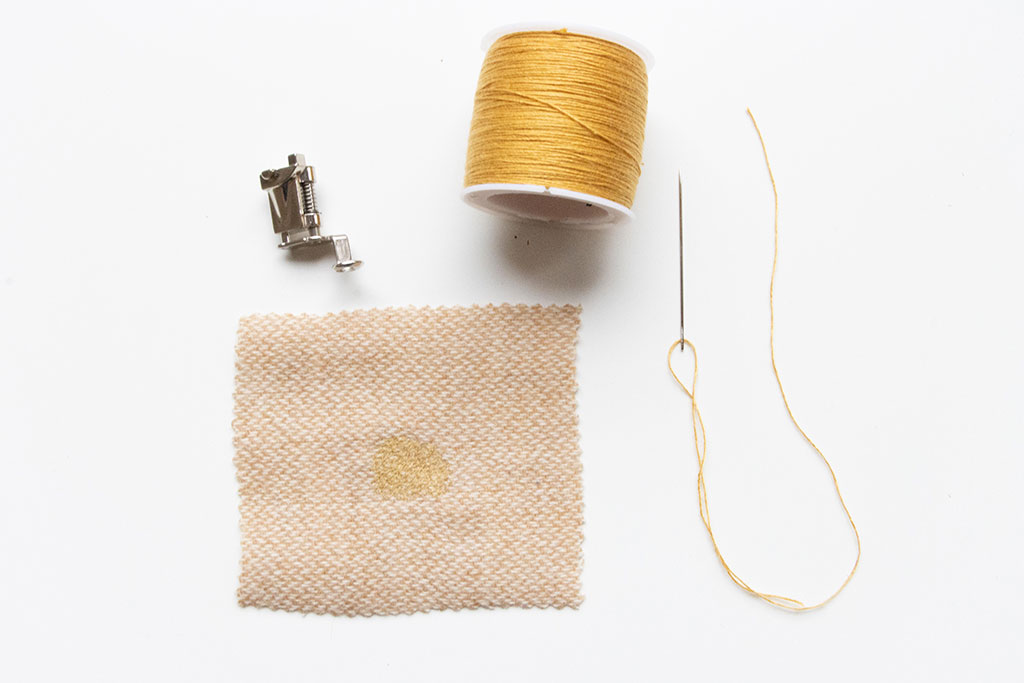
I have a big bag of clothes waiting for mending, but I want the process to be as rewarding as the finished result. While I love visible mending, sometimes I want a quick, discreet repair. So, I tried both hand and machine darning to see what felt best. Here’s what I learned.

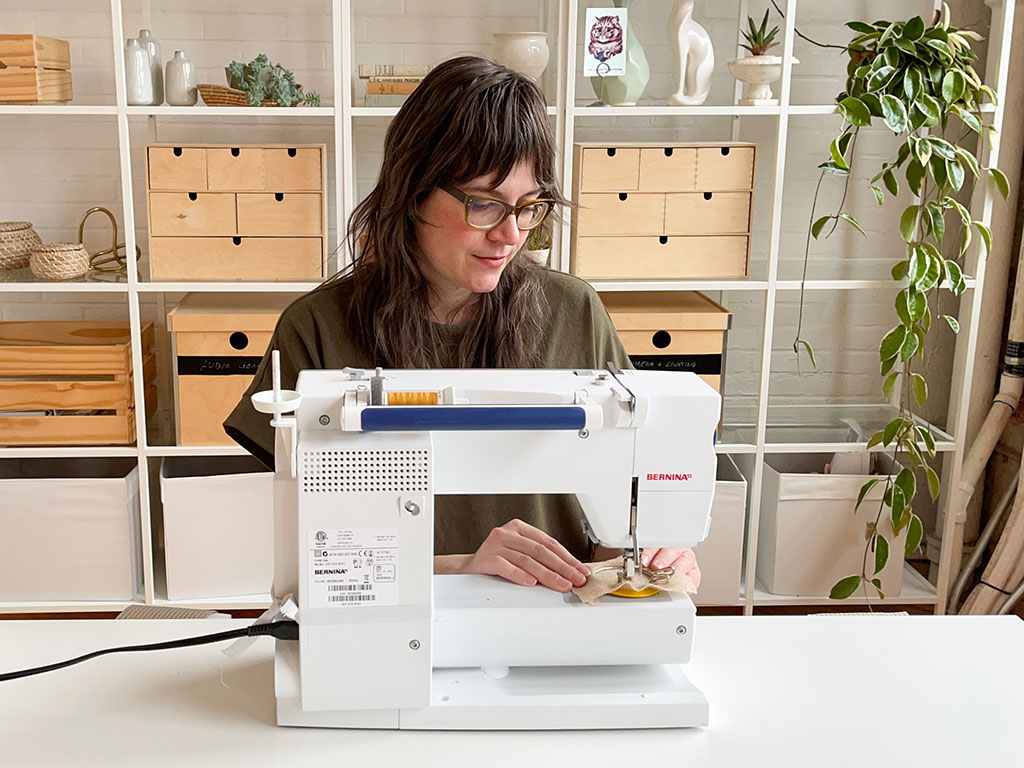
What’s the Best Way to Darn Clothing?
If you choose to darn, you are forgoing colorful visible mending techniques. Darning’s goal is to replicate the weave of your fabric to cover any holes or areas of stress invisibly. You can get extreme with darning, and there are specialists who can seamlessly close holes on anything from tweed to selvedge denim.
Darning by Machine
If you think you’d prefer machine darning, here are some questions to ask.
- Am I ok with a different weave than my original garment? Some fabrics have an open weave, and a machine won’t be able to replicate hand-knit garments.
- Do I have a darning foot for my machine? Might as well use it.
- Do I need a quick, strong fix? Your machine can help with speed and strength.
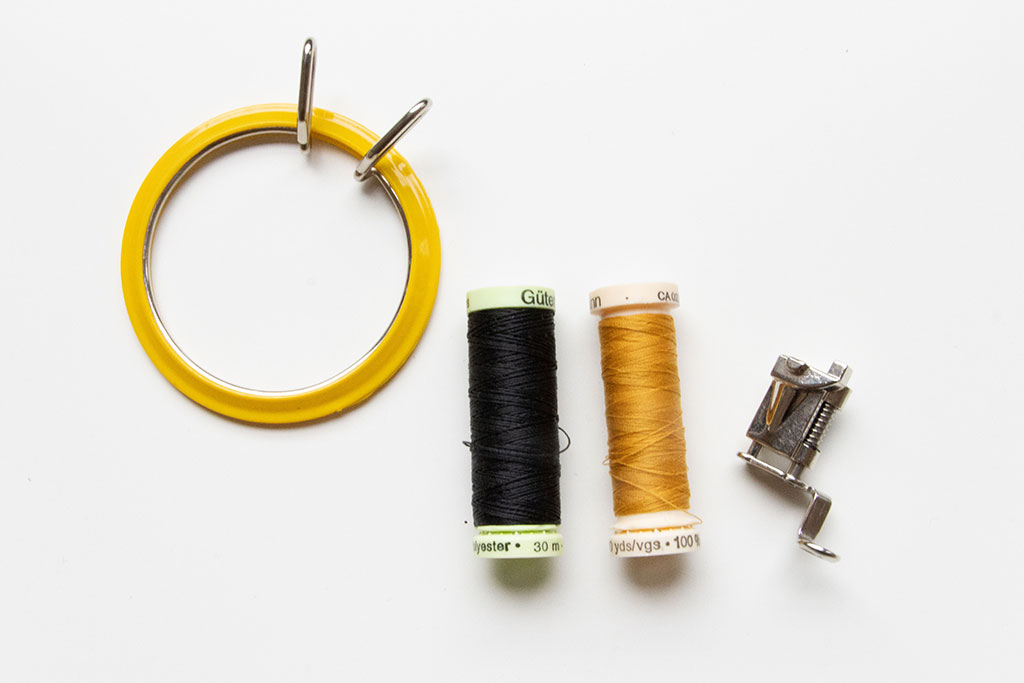
For these samples, I used a darning foot and matching all-purpose thread to darn a hole in denim and wool.
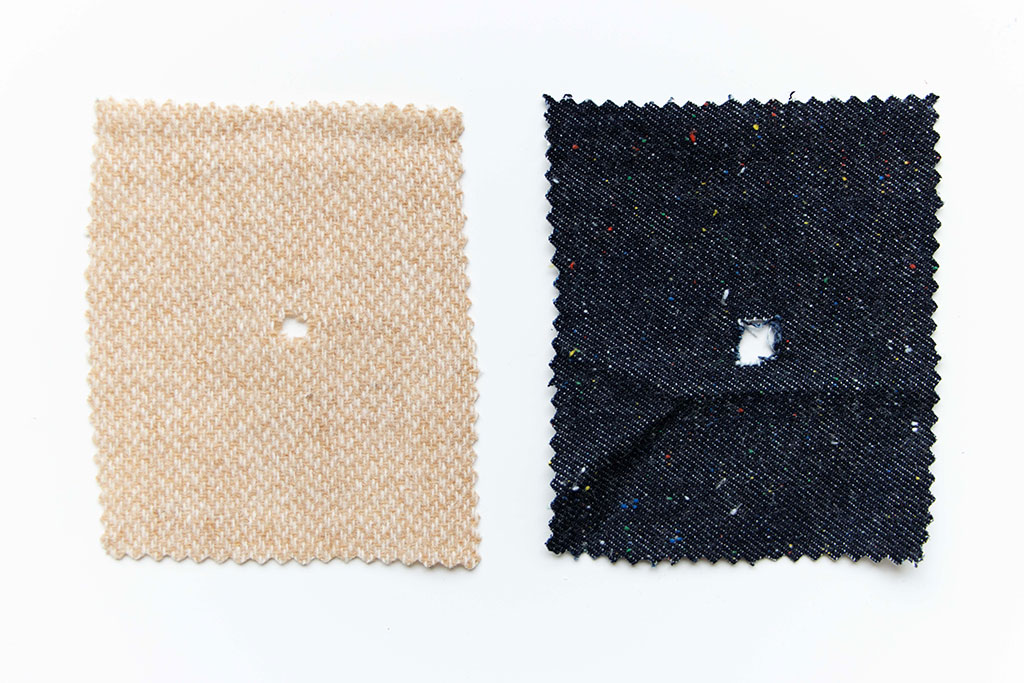
I put a patch on the back of the hole to stabilize it, and secured my fabric in a metal, spring-tension embroidery hoop that could sit flat on my machine. If you don’t have one of these, I’ve seen tutorials where you can use a mason jar lid and a hose clamp from the hardware store to make a DIY version.
With the darning foot on and my feed dogs down, I sewed back and forth along the hole. I used a straight stitch along the warp and the weft until it appeared mended. For the denim sample, I used a navy thread on top and a white thread in the bobbin.
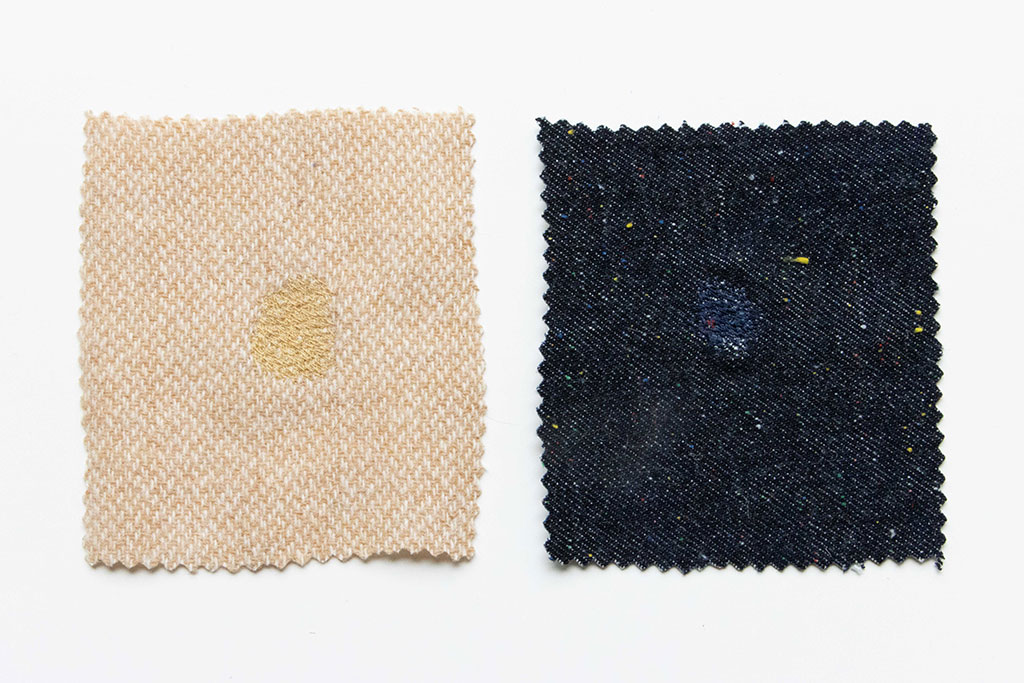
How much time did it take? I mended a small hole in just a few minutes, from cutting the patch to snipping the last thread.
How does it look? On the denim, the area appears shiny and lacks that signature twill weave, but it is not noticeable from a distance and blends nicely. However, the mended area appears flat on the wool, and it no longer has the multi-colored weave.
What did it feel like? Because this repair was so fast, I felt enticed to mend more holes! Having an assembly line of repairs each month could be really rewarding.
Darning by Hand
If you’re leaning toward hand darning, here are some questions to help you make your final decision.
- Can I replicate this weave? Look at your hole. Would it be possible to replicate the weave of the fabric?
- Do I really care about this project and want to have the most control over my stitches?
- Am I feeling super patient right now, or am I in a hurry?
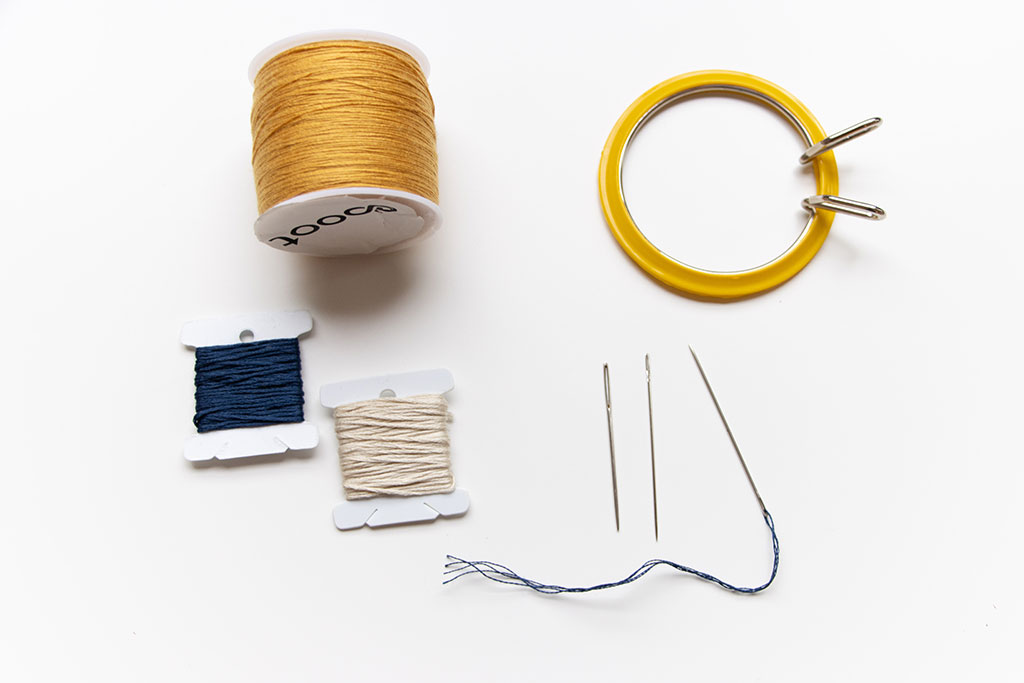
For the hand darning samples, I used an embroidery hoop, long darning needle, and thread to repair a hole in the same type of denim and wool.
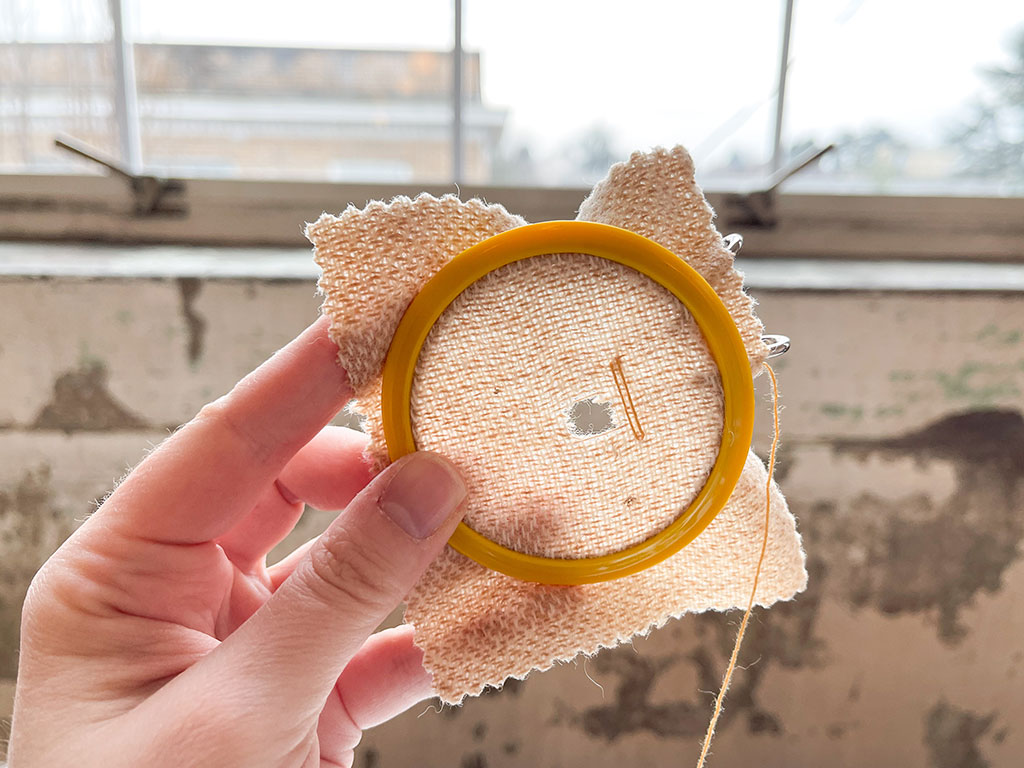
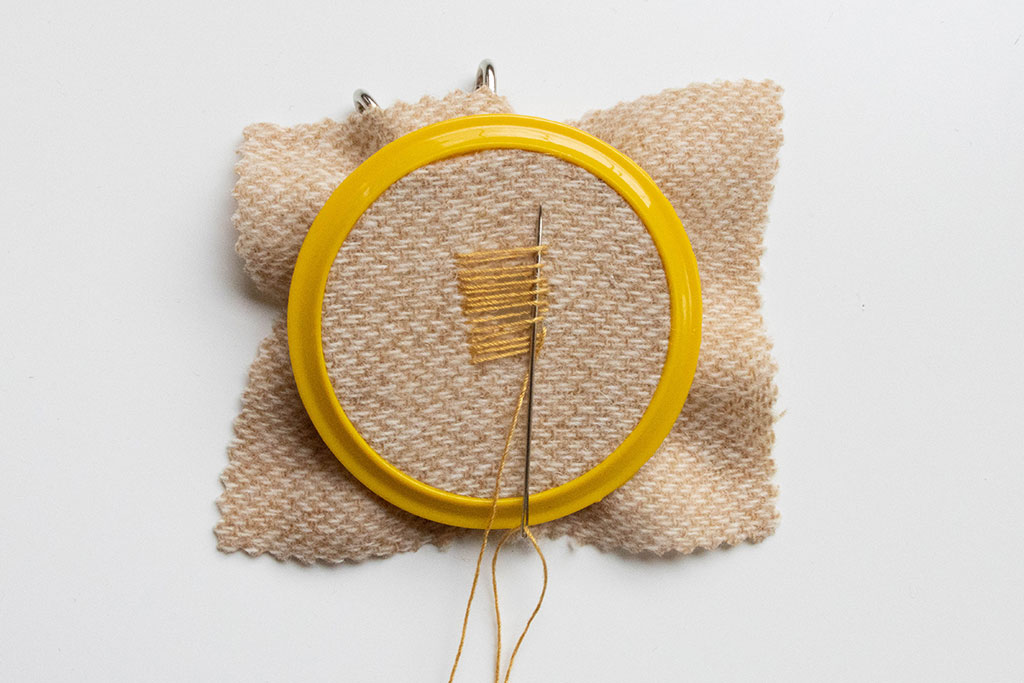
I sewed long darning stitches running vertically over the hole. Then I wove horizontal stitches across the vertical threads, securing the area around the hole with some running stitches.
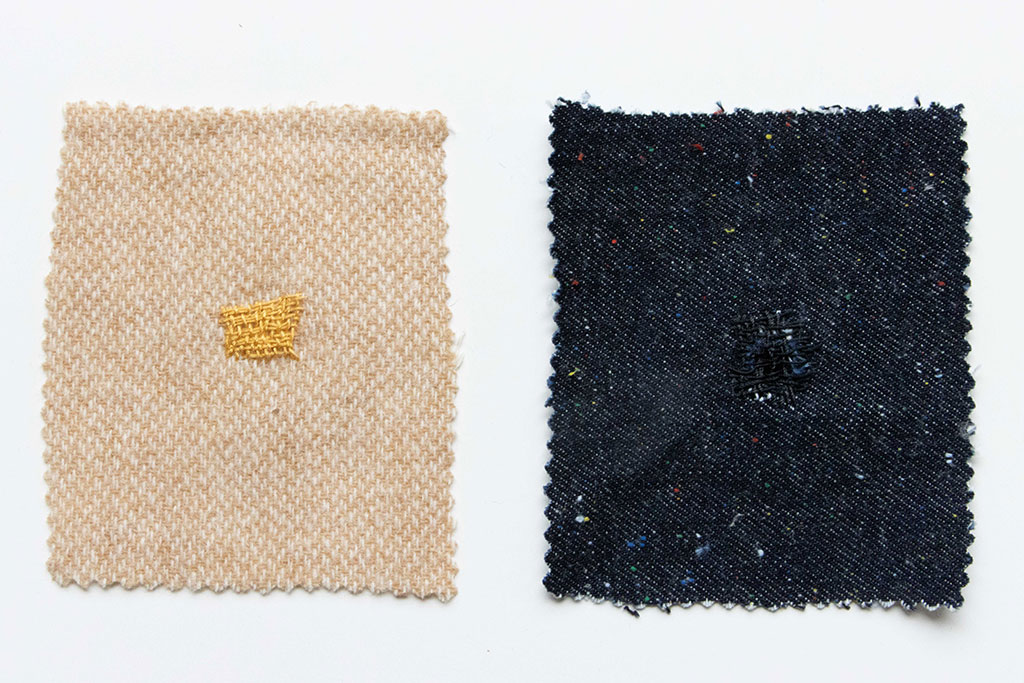
How much time did it take? This was a slow process with the denim. My needle kept shoving the white weft threads up through the hole, and my all-purpose thread was not thick enough to cover them. So I ended up switching to embroidery thread, pulled apart two strands, and then it took about 20 minutes to weave over the hole.
How was the end result? I didn’t get an exact match with my embroidery thread, so it’s more noticeable than the machine-darned sample. With practice, hand darning on the wool could look much nicer than machine darning, because you can maintain the fluff of the fibers and use two different colored threads.
What did it feel like? I had to actively resist the urge to dip into visible mending. I simply didn’t have the patience for perfection! Trying to match the weave of the fabric made me feel antsy. In the end it was an obvious fix, and I found myself tensing up as I stitched. I think I might find more thrill with intentional visible mending.
If you want to see some darning done by a professional who enjoys the challenge of replicating a fabric's original weave, read this interview with Alyx Jacobs and check out her beautiful mending projects.
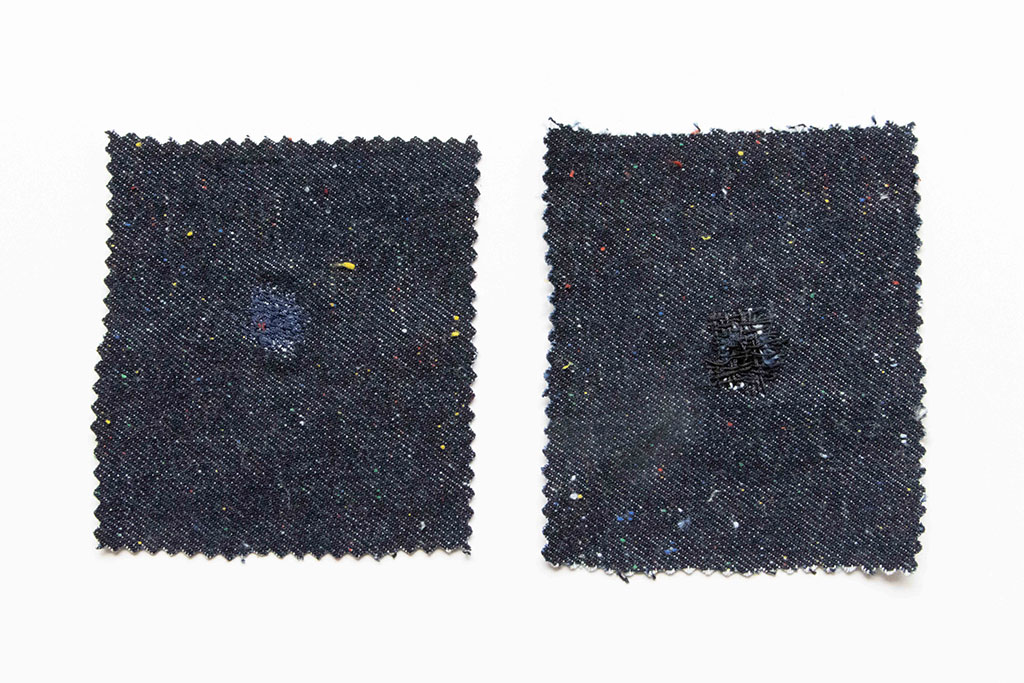
So is one better than the other?
After spending time with all my samples, I learned a few things.
- Having the right tools makes it much easier, especially when darning by hand. Match the weight of your thread and the thickness of your needle to your project.
- Your mood can make or break the project. If you are feeling impatient, don’t darn by hand.
- Use your machine for strength and speed! Machines are so helpful. Don’t feel pressured to perfect the art of mending if you just need a quick, durable fix.
- Your hands make projects portable—and if you find hand-sewing relaxing, then mending might get you into a state of creative flow. Or, like me, it could make you a little angry.
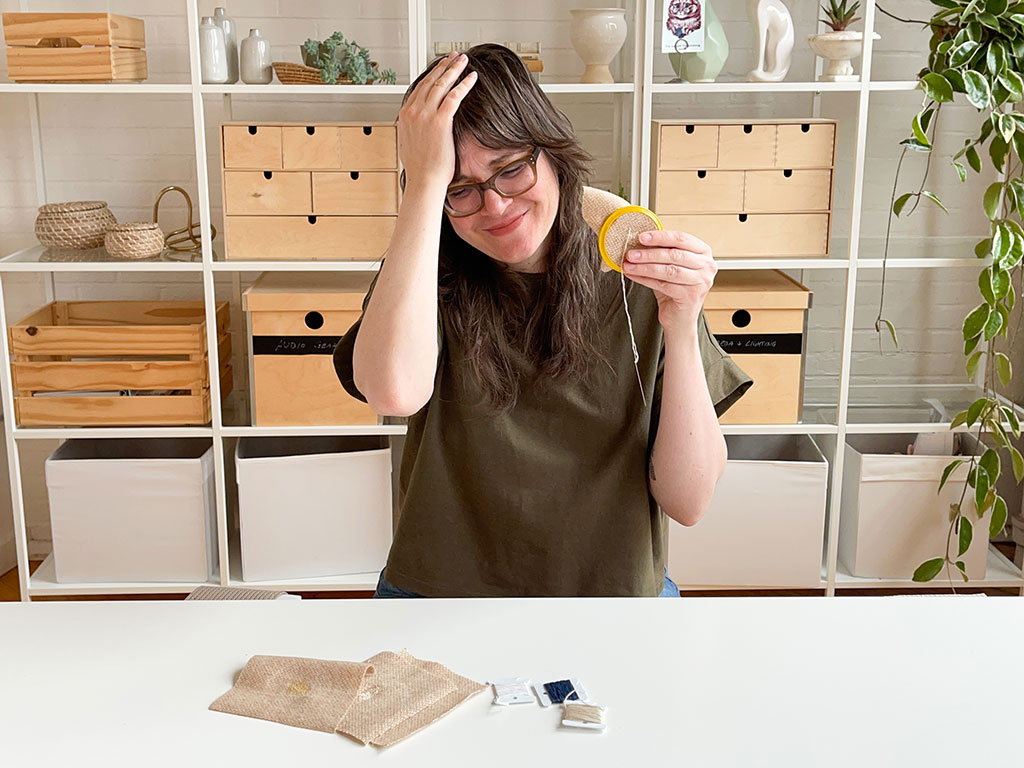
Your mood can make or break the project. If you are feeling impatient, don’t darn by hand.
I was surprised at how in-tune I was with my feelings as I darned. So overall, what do I recommend? I am pretty firmly team-machine, but it depends on your mood and what you want your repair to look like.
If your grandma knit you a pair of socks that now have holes in both heels, it might be more rewarding and fun to grab a needle and colorful yarn to fix them by hand. Maybe you tore a pair of jeans that you can't imagine not having in your closet. It might be quicker and easier to jump on your machine. Pick the mending method that matches your patience, and you’ll have the energy to mend any hole you spot.
Love the article? Pin it for later.



